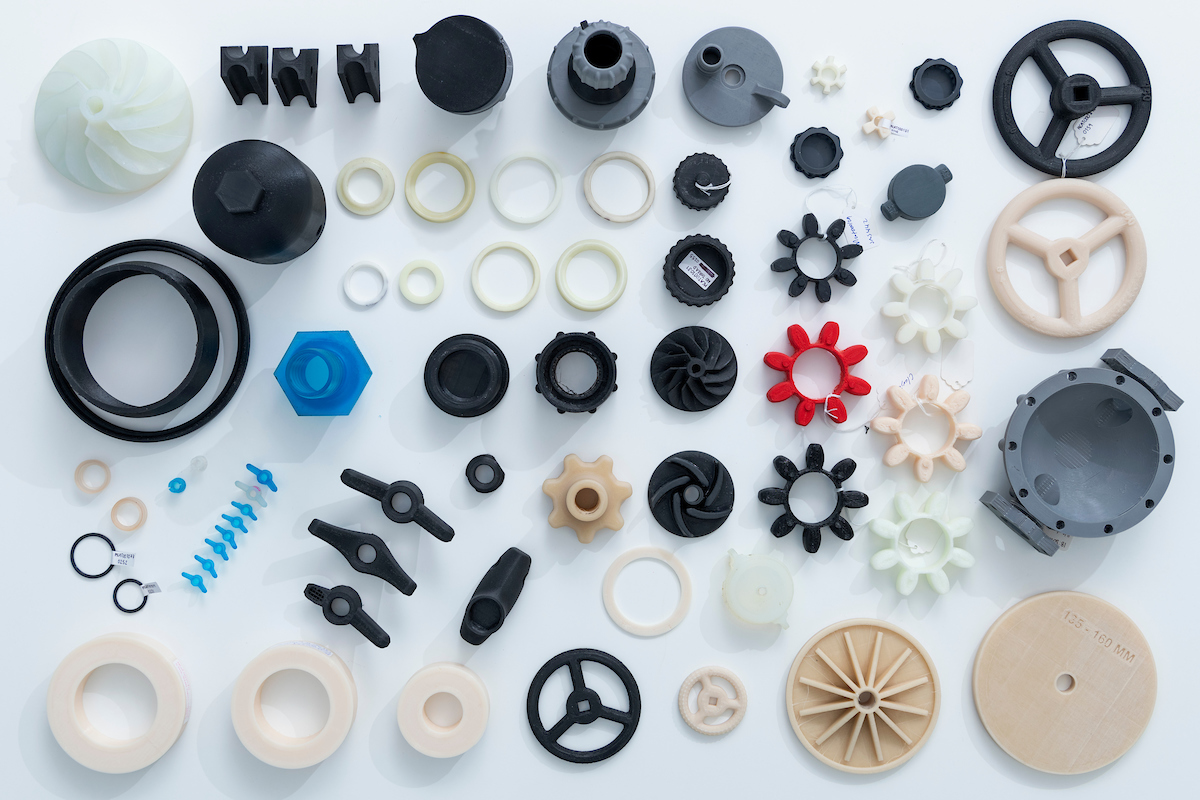3D printing has been connected to numerous other progressive technologies—many of which are evolving on parallel paths, and often intersecting too. Drones are a good example, as they often seem to draw a similar group of users and makers, from some pretty outrageous ideas to the basics like quadrotor frames, and autonomous solutions featuring 3D printing; organizations like the military have also continued to innovate with 3D printed drones for surveillance and new flight applications.
Now, in a new twist, drones are being used to deliver 3D printed parts to remote locations. It makes perfect sense, allowing technological sustainability to come full circle. Norway-headquartered Equinor is hoping to make history, performing offshore parts deliveries using drones.
The initial sojourn included a drone flight bearing a 3D printed part for a lifeboat system, traveling from Mongstad base to the Troll A platform in the North Sea. Equinor reported that the delivery went off without a hitch, with the Camcopter s-100 drone (made by Schiebel) traveling for an hour and reaching heights of 5,000 feet to reach the site for Norway’s largest gas producer.
“Development is rapid, and we see a huge potential within drone technology that could transform the way we operate, both under and above the sea surface. Equinor aims to lead the way in utilizing new technology on the Norwegian continental shelf,” says Arne Sigve Nylund, Equinor’s executive vice president for Development and Production Norway. “Drones could reinforce safety, boost production efficiency and contribute to lower CO2 emissions from Norwegian oil and gas. Drones will also play a role as we shape new energy solutions on the Norwegian shelf.”
The Camcopter s-100 drone has been comprehensively evaluated for such missions, and has already flown an impressive 70,000 hours for different services related to defense and the Coast Guard. The small unmanned aircraft is around four meters long, weighs just over 100 kilograms, and while flying at speeds over 150 km/h, will bear inventory up to 50 kg. Nordic Unmanned, headquartered in Sandnes, and a leader in drone technology and services for Europe, operated the drone, seeing it successfully to its destination.
Equinor is also working with the Civil Aviation Authority, Avinor Air Navigation Services and the Norwegian Communications Authority as they continue their new services.
“If we are to develop the logistics solutions of the future on the Norwegian shelf, where drones could play an important role, we must cooperate across all of the industry’s players; operating companies, suppliers, the authorities and the trade union and safety interests,” says Alena Korbovà Pedersen, head of developing logistics solutions for Equinor.
Drone delivery services offer many potential benefits from saving energy as larger vessels are not required for transport, maintenance equipment can be sent to other locations, and important parts are flown quickly from one area to another. In this first Equinor delivery, a diesel nozzle holder was delivered. As an obsolete part that is difficult to order, the component was 3D scanned, re-designed and 3D printed using Inconel 718, an industrial metal alloy.
While Equinor has reported this as the first freight delivery taking place over a long distance to an offshore installation, they are not the first to dream up the idea of transporting 3D printed parts to offshore partners or clients; in fact, recently we reported in detail on Wilhelmsen, one of the world’s largest maritime companies, also ambitious regarding the use of drones for sending 3D printed parts offshore.
Collaborating with Singapore’s F-drones, Wilhelmsen (also headquartered in Norway) has already begun 3D printing spare parts as of December 2019 and completed delivery of scupper plugs via drone to BergeMafadi (a Berge Bulk vessel) in February. Wilhelmsen will be responsible for the only drone delivery business permitted to operate under the jurisdiction of the Civil Aviation Authority of Singapore.
[Source / Images: World Oil]Subscribe to Our Email Newsletter
Stay up-to-date on all the latest news from the 3D printing industry and receive information and offers from third party vendors.
You May Also Like
3D Printing Financials: Fathom Struggles in Financial Quicksand During Critical Transition
Facing a year of key transitions and financial pressures, Fathom (Nasdaq: FTHM) has filed its annual report for 2023 with the U.S. Securities and Exchange Commission (SEC). The document outlines...
Latest Earnings Overview for Australian 3D Printing Firms Titomic and AML3D
Australian 3D printing manufacturing firms Titomic (ASX: TTT) and AML3D (ASX: AL3) reported their financial results for the period from July to December 2023, marking the first half of their...
3D Printing Webinar and Event Roundup: April 7, 2024
Webinars and events in the 3D printing industry are picking back up this week! Sea-Air-Space is coming to Maryland, and SAE International is sponsoring a 3D Systems webinar about 3D...
3D Printing Financials: Unpacking Farsoon and BLT’s 2023 Performance
In the Chinese 3D printing industry, two companies, Farsoon (SHA: 688433) and Bright Laser Technologies, or BLT (SHA: 688333), have recently unveiled their full-year earnings for 2023. Farsoon reported increases...

































